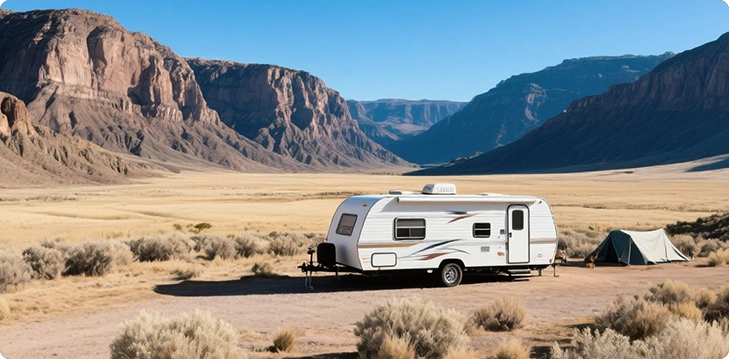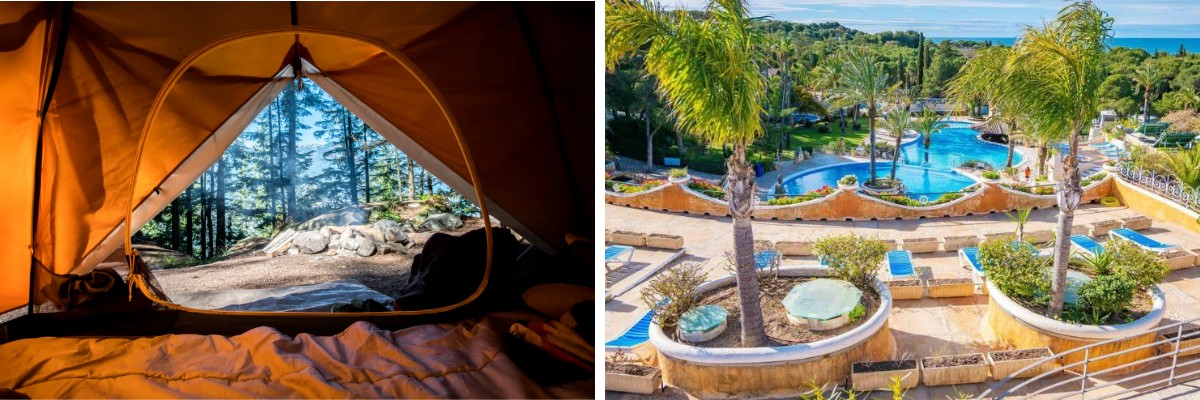Campsites are no longer just parking lots, service areas, or scenic spots. They should be reimagined as new lifestyle spaces—a concept, a place for social interaction, or even a comprehensive community. Just like the neighborhoods we live in, they shouldn’t only provide parking, fueling, and rest, but also shopping, entertainment, coffee shops, cinemas, bars, hotels, banks, sports facilities, healthcare, and more—everything you might need in urban life should be available here.
Of course, campsites vary in size and features depending on the region and environment. They should be designed according to local conditions, trends, and market demands, embracing creativity and unique characteristics. In a network of campsites along a route, individual sites need not cover every service; instead, they should complement each other through integration and coordination.
How to drive secondary development of campsites?
To develop campsite tourism, it’s necessary to go beyond basic accommodation by integrating cultural and entertainment elements while improving service quality. This gives rise to the concept of “Campsite+.” The “Campsite+” model enriches campsite content, broadens customer markets, and enhances both brand recognition and operational innovation. But what exactly are the “Campsite+” models, and how can they be effectively combined?
Campsite + Scenic Spot
Building campsites within scenic areas helps divert visitor flow while allowing precise marketing to target groups. For the scenic spot, campsites reduce overcrowding and, with comprehensive facilities such as dining, lodging, and entertainment, can encourage visitors to stay longer, transforming them from mere tourists into leisure vacationers, increasing spending and profitability.
![1758175477485949.jpg]()
Park Playa Bara, Spain
Park Playa Bara is a large integrated tourist resort combining scenic, recreational, and service areas. Located next to the famous Roda de Bara beach in northeastern Spain, the campsite is filled with Mediterranean flora and enjoys a beautiful beach with calm, clear waters ideal for water sports and leisure.
The campsite is divided into living, entertainment, business, and sports zones, separated by trees and greenery. It is equipped with independent water and sewage treatment systems and 220V electricity. Living areas include modern washrooms with free hot water, laundry, ironing, and gas facilities.
The business service area features supermarkets, a post office, clinics, bars, restaurants, hair salons, gyms, a circular theater, ATMs, car rentals, and tour services—fully meeting the daily needs of visitors.
The entertainment and sports areas include football, tennis, basketball, swimming pools, bowling, mini-golf, and playgrounds. Visitors can also join surfing lessons and participate in sports competitions.
Thanks to its Mediterranean climate, Park Playa Bara attracts visitors year-round, especially in summer from Spain and neighboring countries. With its natural beauty, complete facilities, and high-quality services, it has become a major attraction in Spain, receiving multiple awards from the National Tourism Board, the Catalonia local government, camping clubs, and automobile associations.
Campsite + Sports
Integrating sports and tourism has become a key strategy for developing both industries. Introducing sports programs to campsites and leveraging local environments for unique sports offerings helps distinguish them from standard scenic accommodations.
![1758175530575582.jpg]()
Woodward Camp, USA
Founded in the 1970s in central Pennsylvania as a gymnastics summer camp, Woodward met local demand for both sports and outdoor activities. Initially a seasonal sports camp, it quickly gained popularity, becoming a trendsetter for outdoor family entertainment.
Today, after 50 years of development, Woodward is a multifunctional outdoor sports and leisure facility, offering professional-grade amenities for youth and athletes. Its philosophy is to help participants explore their favorite sports and maximize potential. Activities range from specialized sports to adventure zones, youth playgrounds, and family areas.
The mountain park starts with a foundational learning area and gradually transitions through skillfully designed paths to varied terrain, offering age-appropriate challenges. Extreme sports areas provide platforms for activities like skiing and gymnastics. Camps also invite Olympic athletes and experts for VIP training sessions, inspiring young athletes.
The extreme sports park includes skateboarding, mountain biking, BMX, motocross, and parkour tracks, offering diverse and exciting challenges that push visitors’ limits.
Campsite + Education
Educational travel is a growing demand in experiential learning. Campsites serve as effective outdoor venues for art, team-building, and military-style programs, capturing significant market share. Campsite education is key to activating the “non-holiday economy.”
GreenCamp, Bali
GreenCamp is an educational campsite founded by John and Cynthia Hardy, situated in Bali’s jungles and rice fields, constructed primarily with bamboo. Unlike most Western camps, GreenCamp leverages Bali’s “tropical paradise” environment and emphasizes sustainability and environmental education, allowing children to engage deeply with local nature and culture.
The camp offers activities for children, families, and school groups, challenging participants physically, intellectually, and emotionally. Family programs include workshops, mud wrestling, coconut games, organic farming, and learning local traditions. Children’s camps provide natural learning environments, teaching sustainability while offering fun experiences such as chocolate making, natural dyeing, shadow puppetry, and exploring rainforest ecosystems.
Youth programs focus on outdoor adventure, surfing, ocean safety, community projects, and learning Balinese culture, fostering confidence and critical thinking. School group programs and English camps provide structured activities that cultivate students’ love for nature and outdoor exploration.
![1758175581317734.jpg]()
Campsite + Theme Park
Campsites represent “wild” and theme parks “man-made.” The “Campsite + Theme Park” model merges natural camping experiences with thematic entertainment, creating unique attractions and market appeal.
Kangteng Gaoligong Tent Camp, Yunnan, China
Located in Tengchong, near volcanoes, hot springs, Heshun Ancient Town, and the biodiverse Gaoligong Mountains, this elevated campsite spans tree canopies with 1,000 meters of skywalks. Platforms named after local flora provide scenic views, outdoor dining, small conferences, and nature education opportunities.
Visitors can walk in the forest, picnic in clearings, and observe flora along the way, fostering close contact with nature and reflection.
![1758175644477549.jpg]()
Campsite + Agritourism
With the rapid growth of rural tourism, combining campsites with agritourism enriches campsite content and boosts rural attractions, generating added value.
![1758175706771496.jpg]()
VITAL Camp, Germany
Located in a Bavarian five-star spa resort, VITAL Camp offers hillside terraced views, top-tier facilities, and full-service amenities. Features include a spa, indoor heated pool, sauna, and mineral-rich indoor thermal baths for relaxation.
The site also includes three natural lakes with varying depths, providing outdoor bathing areas. Sports facilities such as tennis courts, cycling paths, and golf are available.
Accommodation options include outdoor tents, RVs, and luxury countryside lodges with kitchens, bathrooms, living areas, and bedrooms.
The campsite hosts seasonal events like Halloween, music parties, water festivals, and beer festivals, offering family-friendly and corporate activity opportunities.
![1758175760329641.jpg]()
With the growing number of campsites in China and increasing competition, differentiation is essential. Campsite development should focus on experience-driven design, innovation, and expanding perspectives in product offerings, interactive experiences, scene design, and operation models, ultimately giving “Campsite+” endless possibilities.









